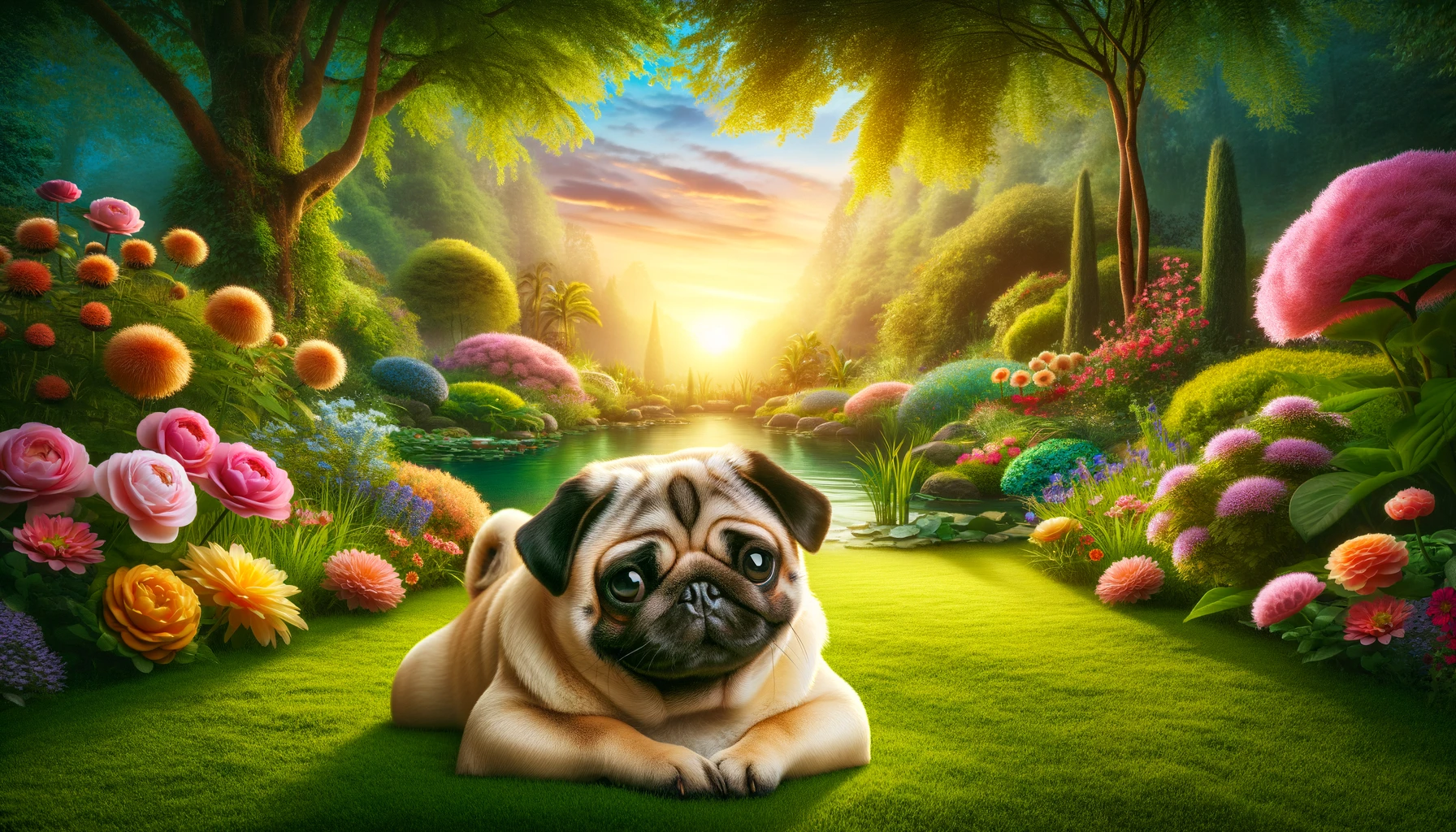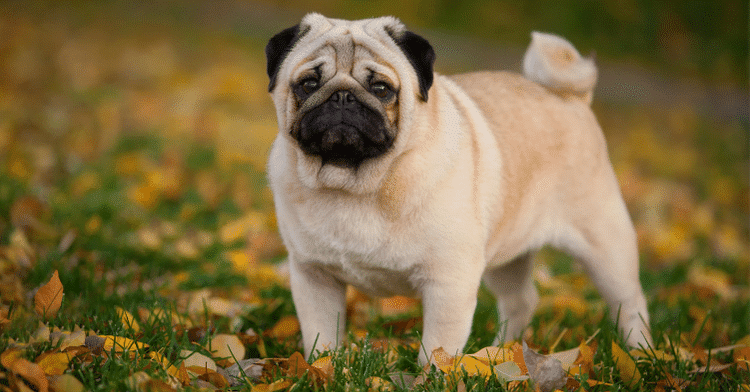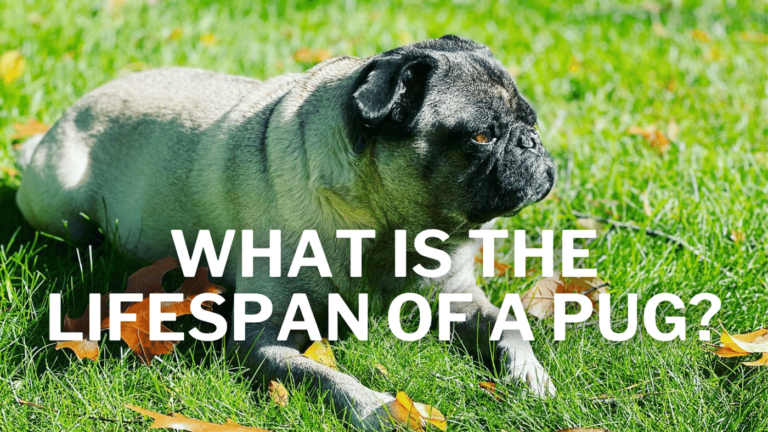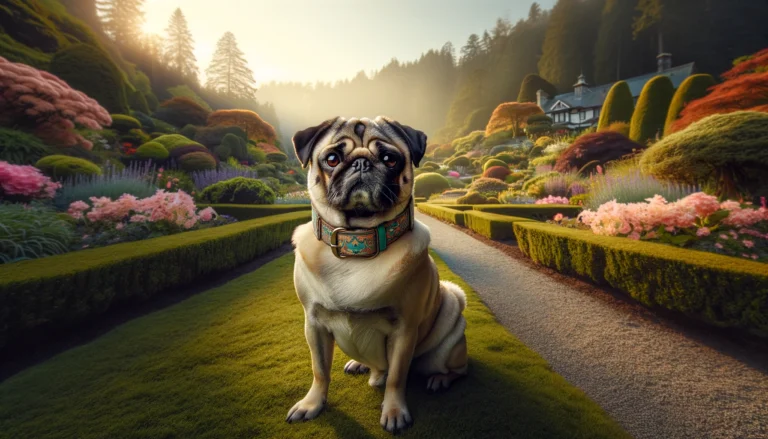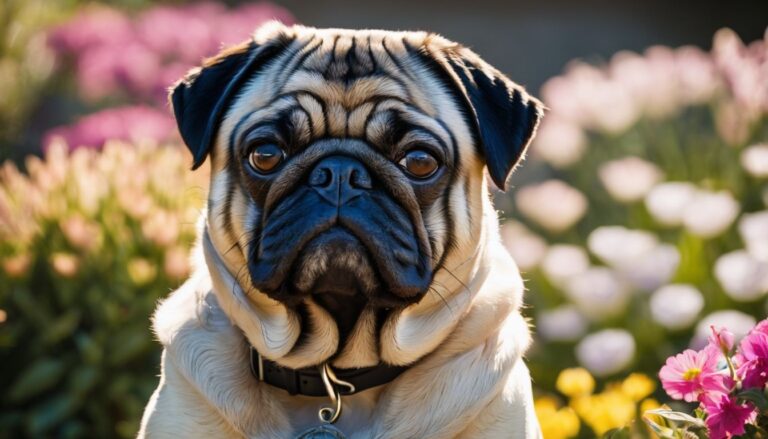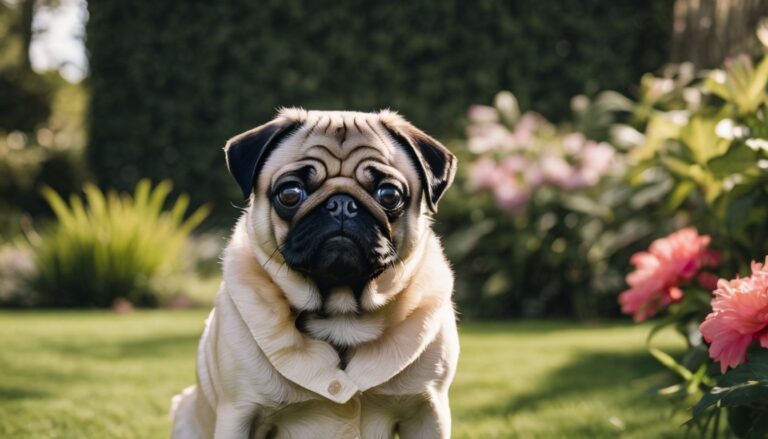Are Pugs Calm: a Comprehensive Guide
Are Pugs Calm?
I’ve always marveled at the serene nature of pugs, those compact bundles of joy with expressive faces. Given my fascination, unraveling whether are pugs calm felt like a natural step forward.
In this guide, we’ll dive deep into the world of pugs, exploring their temperament and why they stand as epitomes of tranquility in the canine realm.
You’ll discover fascinating insights into their history, from ancient China to becoming cherished family pets across the globe. We’ll peel back the layers on what makes these adorable dogs the ultimate companions, delving into their playful yet easygoing personalities.
From understanding the nuances of training pugs to adapting to their health needs, this article promises a comprehensive look at ensuring these affectionate dogs lead happy, fulfilled lives alongside their human families.
Key Takeaways:
- Exploring Pug Calmness: A deep dive into why pugs are considered calm dog breeds and how their temperament makes them perfect companion dogs.
- Pug Care and Companionship: Insights into the unique needs of pugs, from training challenges to health considerations, and how these aspects contribute to their overall calm demeanor.
- The Joy of Pug Ownership: Understanding the joy and responsibility of owning these playful, affectionate, and sometimes vocal dogs, solidifying their status as beloved family pets and easygoing companions.
The Historical Charm of Pugs
The journey of pugs began in ancient China, around the years 200-206 AD. Originally bred as cherished companions for Chinese nobility, these playful dogs quickly captured hearts. Their charm wasn’t confined to the East for long.
By the 1500s, pugs had trotted their way into European high society, becoming a symbol of affluence among the wealthy. Known for being affectionate dogs, their popularity soared, marking them as a distinguished member among ancient dog breeds.
Fast forward to today, and the adoration for these companion dogs stretches worldwide. This is a testament to their enduring appeal across cultures and centuries. Renowned for their temperament, answering “Are Pugs Calm?” with a resounding yes, pugs have seamlessly transitioned from the laps of ancient Chinese emperors to becoming beloved family pets in homes globally.
Their story is not just one of historical significance but also an enduring legacy of pug companionship and the universal quest for an easygoing pet.
Defining the Pug Temperament
I have always been fascinated by pugs, a breed that epitomizes a unique mix of calmness, affection, and playfulness, answering the question, “Are Pugs Calm,” with a definitive yes.
These easygoing pets exhibit a distinct temperament that distinguishes them from other dog breeds.
Indeed, pugs belong to the calm dog breeds category, yet they surprise us with spirited playfulness. Their history as ancient dog breeds and cherished companions has molded them into the affectionate dogs we adore today. Pugs thrive on being part of the family, exhibiting traits that make them ideal family pets.
Despite their penchant for calm and nap-filled afternoons, pugs can be quite playful when the moment strikes. This balance allows them to adapt to various lifestyles, whether that entails lounging at home or participating in light pet training sessions.
As companion dogs, pugs’ personalities shine through their eagerness to please and their sometimes vocal way of communicating. From barking to gentle grunts, they make their presence known in the most endearing ways.
Pugs as Companion Dogs
Pugs have carved a niche for themselves in our homes and hearts, primarily due to their unshakeable status as companion dogs. This title they proudly bear stems from their origins, deeply rooted in ancient dog breeds, where they were not expected to hunt or guard but simply to offer their companionship.
The role of pugs, across centuries, and even in today’s fast-paced world, has remained singularly focused on providing affection and comfort to their human families.
Their demeanor, often leading to the question, “Are Pugs Calm?” plays a crucial role here; it makes them ideal for households looking for an easygoing pet. Pugs, renowned for their calm temperament and personality traits, seamlessly blend into the rhythm of family life. They form deep bonds, often becoming an inseparable part of family units.
Understanding their history, one can appreciate how this affectionate nature and serene outlook have shaped them into the lovable companions we cherish today.
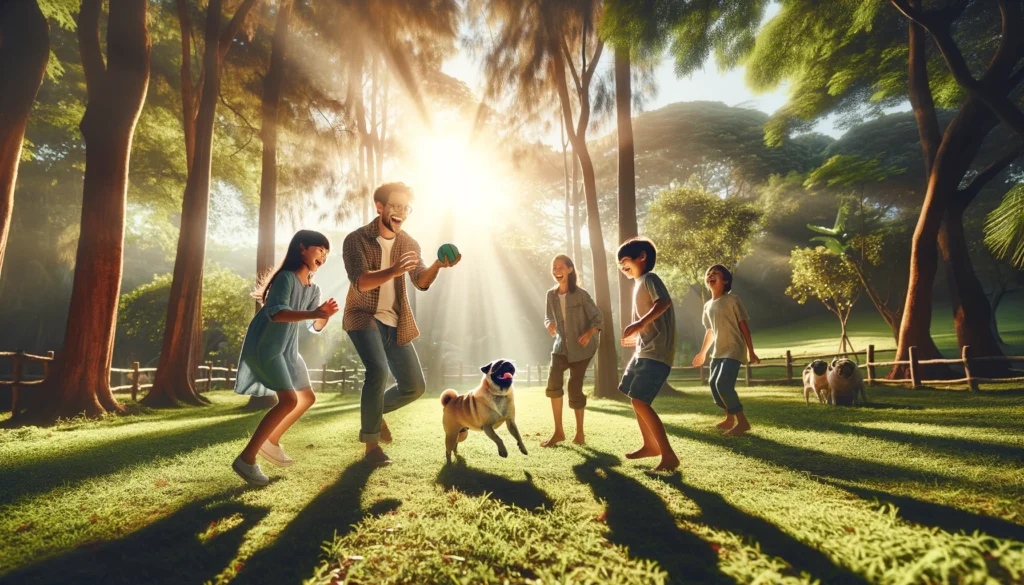
Are Pugs Calm – Family Compatibility
Pugs, with their calm demeanor, have always proven themselves as the perfect fit within the family dynamic, embodying the essence of “Are Pugs Calm.” Their temperament paved the way for an affectionate bond with children.
Pugs are not just pets; they become a loving part of the household.
Their playful nature endears them to both kids and adults alike. Not one to shy away from a lazy afternoon, a pug will happily curl up for storytime or gently frolic in the backyard. This breed’s compatibility with family life has solidified its place as an adored family pet. With each passing day, pugs continue to display an uncanny ability to adapt to the rhythm of household life, showing patience and affection in equal measure.
Their history as cherished companions remains unwavering, a testament to their enduring appeal. In essence, for those yearning for a pet that will seamlessly weave into the fabric of family life, opting for a pug will undoubtedly fulfill that wish.
The Energy Levels of a Pug
Many have marveled at the tranquil nature of pugs, often asking, “Are Pugs Calm?” and attributing this quality to their surprisingly low energy levels. These affectionate dogs embody the essence of calm dog breeds, often found lounging or napping in the coziest corners of the home.
Pugs, descendants of ancient dog breeds, have perfected the art of relaxation over centuries, maintaining their reputation as easygoing and playful companions. Their tendency to seek out soft spots for sleep sessions contributes significantly to their image as calm, content pets.
Engaging in play or a brisk walk will momentarily elevate their energy, showcasing the playful side of these lovable family pets. However, the burst of vivacity is typically short-lived, and soon after, they’ll be seeking their next nap.
This cycle supports their health and maintains their status as affectionate, easygoing companions. For those seeking a pet whose temperament leans towards tranquil, a pug might just be the perfect fit, intertwining companionship with a serene lifestyle.
Training and Stubbornness
Training pugs has always been a journey marked by bouts of stubbornness, leading many to question, “Are Pugs Calm?” Their independent streak stands tall, challenging every pet owner’s resolve. Intriguingly, this very trait encapsulates the essence of pug temperament.
These companion dogs, stemming from their calm dog breed lineage, do not cave easily. They make you work for their obedience. Yet, this is where the beauty of the bond forms.
Pug care demands patience and an understanding of their unique personality traits. Despite the occasional dog barking and vocalizations, I’ve discovered a treasure trove of playfulness and affection. Perseverance turns the tide. With time, these ancient dog breeds yield to an easygoing pet’s lifestyle. Their training becomes a testament to the affectionate dogs they inherently are, thriving as family pets and endearing themselves to all.
Pugs, in their essence, teach us the profound lesson of persistence. Whether it’s pug popularity that’s led them into our homes or their comical charm, overcoming their training challenges only deepens our companionship.
They remind us that beneath the calmness and occasional cacophony lies a heart that beats in unison with ours.
Pug Vocalizations
Pugs have captured hearts around the globe, not just for their expressive faces but also for their unique vocalizations, prompting some to ask, “Are Pugs Calm?” Among dog breeds, pugs stand out for their varied soundscape that goes beyond typical barking. You might catch them yapping, grunting, or even snorting. This trait has led some to question their standing as calm dog breeds.
It’s true, these sounds can be surprising at first. However, they quickly become endearing, integral to the pug temperament.
Pug parents learn to interpret these vocalizations as part of their pug’s personality traits. The barking, when it does happen, is remarkably less about aggression and more about communication. They might grunt to show contentment or snort to demand attention.
This spectrum of sounds has redefined what we expect from vocal dogs. Instead of disrupting a peaceful home, these noises from our pug companionship enrich our lives. It’s an aspect of pug care that becomes a cherished part of the routine, underlining their status as affectionate, easygoing pets.
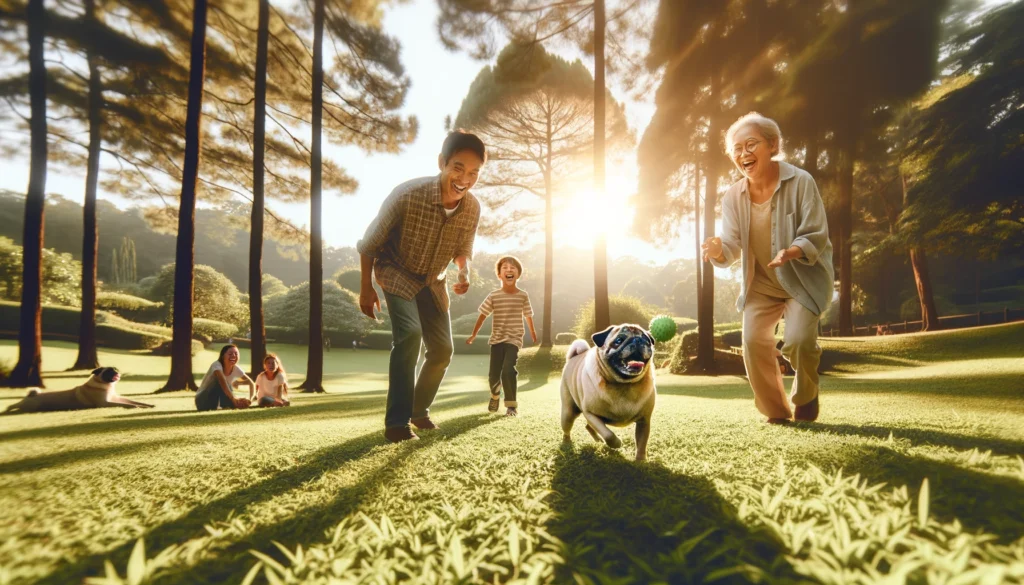
Health Considerations and Calmness
Pugs charm us with their playful dog persona and ancient dog breed mystique, leading many to inquire, “Are Pugs Calm?” They have journeyed from being royal companions to beloved family pets. However, being one of the calm dog breeds comes with unique health considerations.
Pugs face several pet health concerns that prospective pet owners must be mindful of. Their brachycephalic nature, characterized by a short skull, can lead to breathing difficulties. This condition often necessitates a tranquil lifestyle, considerably shaping the pug’s temperament.
Moreover, their propensity for eye problems and skin infections means regular vet visits are non-negotiable for pug care. Such health challenges, while manageable, shape them into easygoing pets better suited to cozy cuddles than strenuous activities.
In essence, the affectionate dogs we adore are also vocal dogs whose physical limitations encourage a more sedate life. Yet, understanding and adapting to these needs not only contribute to their well-being but also to the peaceful coexistence between pugs and their human companions.
The Social Life of Pugs
Pugs have carved a special place for themselves not just among ancient dog breeds but also in the hearts of pet lovers worldwide. Their demeanor and the traits that make them playful yet calm dogs render them ideal family pets. With a history rooted deeply in companionship, it’s no surprise they excel in social settings. They have always been more than just easygoing pets; thriving on affection, pugs are happiest when they’re part of a pack, underscoring how calm they can be.
Regarding other animals, pugs display an admirable level of characteristics typical of affectionate dogs. They usually get along well with other pets, thanks to their non-aggressive temperament and an inherent desire to make friends. This friendly nature extends beyond their kind, making them perfect companions in a household with multiple pets and contributing to the calm they bring to a bustling home.
Their need for human companionship cannot be understated. Pugs were designed to be close to their humans, embodying the essence of a companion dog. Whether it’s following you around the house or snuggling up for a nap, they encapsulate what it means to be calm and devoted pets. Their history as cherished members of royal and noble families in ancient China and Europe has made them symbols of love and loyalty. A pug’s world revolves around their human pack, relying on this close bond for their well-being.
Adapting to a Pug’s Needs
Adapting your home for a pug requires understanding their unique needs, given their calm disposition and specific health considerations. Firstly, ensure your living space is cozy and stress-free, as pugs, being calm dog breeds, thrive in tranquil environments. They cherish their nap times, so a comfortable bedding area is essential. This breed has a history that underscores their role as companion dogs, not just pets but integral family members.
Access to clean, fresh water and a balanced diet keeps them healthy and happy. It’s imperative to monitor their diet closely due to their propensity for obesity. Keep in mind, pugs are playful dogs but their energy levels aren’t high, so manageable play sessions will suffice.
Their brachycephalic nature means they can struggle with breathing, especially in hot or humid conditions. Always ensure your pug lives in a well-ventilated area, with air conditioning or fans during the warmer months. Regular check-ups with a vet familiar with pug care are crucial to address any potential health issues early on. By recognizing and meeting these needs, you create a nurturing environment that caters to the question of whether pugs are calm, affirming their calm personality and promoting their well-being.
Pugs in Popular Culture
Pugs have nudged their way into the limelight of popular culture, bringing with them an air of charm that’s hard to ignore. They’ve appeared in movies, snuggled up to celebrities on Instagram, and even become the faces of countless memes. This exposure has shaped our view of them as not just pets, but as companions with personalities as rich and endearing as any human character. They’re seen as quirky, yet utterly lovable, creatures that are just as comfortable living the high life as they are snoring on a quiet Sunday afternoon.
Their presence in media hasn’t just highlighted their adorable faces and comical antics; it has underscored their temperament as calm and easygoing pets. We’ve watched them nuzzle into the arms of their owners, portraying a serene disposition that wins hearts and answers the question, “are pugs calm?” with a resounding yes.
This portrayal has significantly boosted their popularity, making them one of the most cherished dog breeds. Thanks to popular culture, the pug has become synonymous with companionship, embodying the essence of what it means to have a loyal friend. Their representation has reinforced their image as the epitome of a calm, affectionate, and playful family pet, perfectly suited for those seeking a laid-back companion.

Are Pugs Calm – Concluding Thoughts
Throughout our exploration, we dove deep into understanding pugs, discovering their essence as calm dog breeds, and uncovering the layers of their complex, yet endearing personalities. Having traversed through the annals of pug history, it has become clear why these ancient dog breeds, originating from China and embraced warmly across continents, stand out as adorable family pets. Their journey to becoming one of the most beloved easygoing pets is nothing short of extraordinary.
The defining traits of pug temperament—affection, playful spirits, and an overarching calm—paint a vivid picture of their companionship. These characteristics make them not merely pets, but cherished members of our families. Their adaptable nature solidifies their position as ideal companion dogs, particularly appealing for those desiring a serene household ambiance. Despite their penchant for vocalizations, which might include an assortment of barks, snorts, and grunts, this trait endearingly underscores their personality rather than detracting from their tranquil demeanor, reinforcing how pugs are calm.
Pugs exemplify the pinnacle of affectionate dogs, their joyful playfulness, and unwavering loyalty illustrating why they are esteemed as family pets. Training these playful dogs does introduce challenges, courtesy of their known stubbornness; however, patience and dedicated pet training pave the way for a harmonious living environment. The ancient breed’s need for companionship aligns with its calm disposition, making them excellent additions to multifaceted households, thriving amidst the hustle and bustle of family life or settling cozily in quieter, more easygoing settings.
In reflecting on pug care, acknowledging their health considerations becomes a testament to our commitment to ensuring they lead a happy, calm life. The serene energy levels of pugs, coupled with their unique social needs, compel us to adapt, fostering environments that cater to both their physical and emotional well-being. Their representation in popular culture as beloved, tranquil pets only echoes the sentiments of pug enthusiasts around the globe. In essence, the allure of pug companionship stems from their calmness, affability, and the unbreakable bond they forge with their human counterparts, embedding them as irreplaceable parts of our lives.

